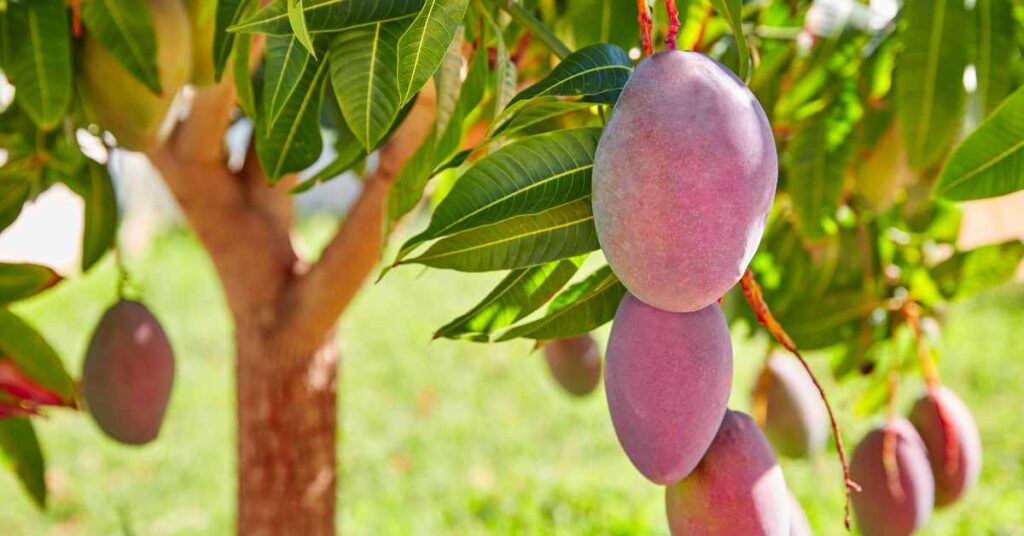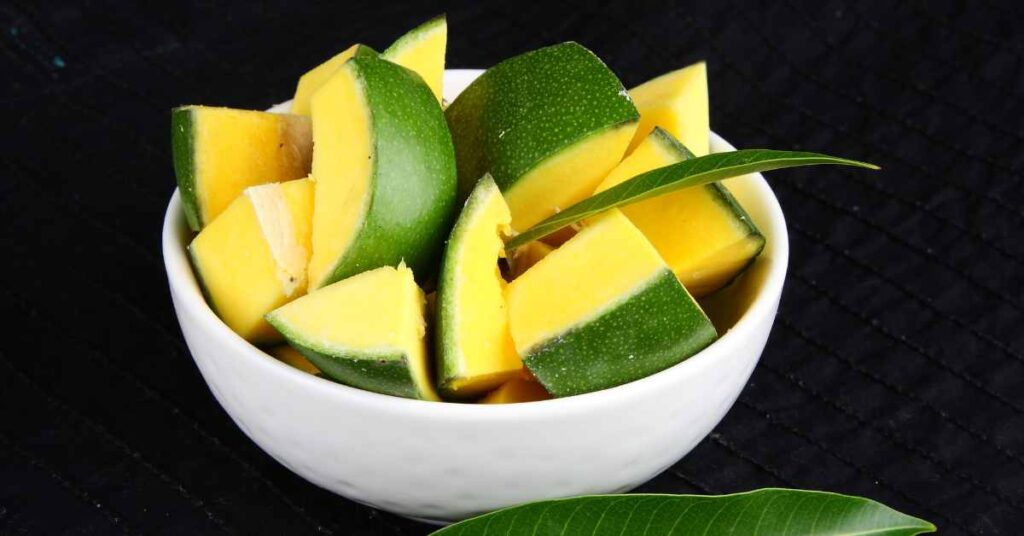Introduction to Mango Verde
Mango verde, or green mango, refers to the unripe version of the widely grown mango (Mangifera indica). While many people are familiar with the sweet, juicy ripe mango, mango verde has its own distinct appeal. Known for its tangy and tart flavor, it is a staple in many tropical cuisines and is used in salads, pickles, and chutneys. But beyond its culinary uses, mango verde plays a crucial role in sustainable agriculture, agroforestry, and environmental conservation.
In this article, we will explore the environmental significance of mango verde, from its cultivation and ecological benefits to its contribution to local economies and global sustainability efforts.
The Cultivation of Mango Verde
Growing Mango Verde: Environmental Impact
Mangoes, including these, are primarily grown in tropical and subtropical regions, where the climate is conducive to their growth. Major producers include countries like India, Mexico, Thailand, and the Philippines. Mango trees thrive in these warm climates, requiring well-drained soil and a good balance of sunlight and water.
The environmental impact of growing it depends on the farming practices employed. In many regions, mangoes are grown in agroforestry systems, where they are intercropped with other plants and trees. This method not only provides farmers with diversified income streams but also contributes to environmental conservation.
Agroforestry and Mango Verde
Agroforestry, the practice of integrating trees and crops in a farming system, plays a significant role in the cultivation of it. Mango trees are often planted alongside other crops such as legumes, vegetables, or even coffee. This practice has numerous environmental benefits:
- Soil Health: The deep root systems of mango trees help improve soil structure by reducing soil compaction and promoting water infiltration. Additionally, fallen leaves from mango trees act as organic matter, enriching the soil with nutrients and supporting the growth of other crops.
- Biodiversity: Mango agroforestry systems promote biodiversity by providing habitat for various species of birds, insects, and small mammals. The presence of these species helps maintain the ecological balance, contributing to pest control and pollination.
- Carbon Sequestration: Trees, including mango trees, play a key role in absorbing carbon dioxide from the atmosphere. Agroforestry systems that include mango trees contribute to carbon sequestration, helping to mitigate climate change by reducing greenhouse gas levels in the atmosphere.
The Ecological Benefits of Mango Verde
Erosion Control
Mango verde cultivation can help in controlling soil erosion, especially in regions prone to heavy rainfall and soil degradation. The extensive root system of the mango tree stabilizes the soil, preventing it from being washed away by rainwater. This is particularly important in hilly or sloped areas where soil erosion can lead to loss of fertile topsoil, impacting agricultural productivity and leading to further environmental issues.
Water Conservation
Mango verde trees also contribute to water conservation in agricultural landscapes. Their ability to thrive in a variety of soil types, including semi-arid regions, makes them an ideal choice for water-stressed areas. The leaves of mango trees provide shade for the ground, reducing evaporation and maintaining soil moisture. In some regions, farmers use mulch made from mango leaves and plant matter to further reduce water loss, making mango verde a key player in sustainable water management practices.
Mango Verde and Sustainable Farming Practices

Organic Farming and Mango Verde
Mango verde is commonly grown using organic farming practices, which emphasize the use of natural inputs and the avoidance of synthetic pesticides and fertilizers. Organic farming methods for it not only support environmental health but also yield fruits that are healthier for consumers. Organic mangoes, including mango verde, are free from harmful chemical residues, making them a popular choice among health-conscious consumers.
Additionally, organic farming practices for mango verde help preserve the natural ecosystem by promoting soil fertility and enhancing biodiversity. Farmers use compost and natural fertilizers, such as manure or compost tea, to nourish the mango trees. These practices reduce the risk of soil degradation and minimize the impact on local water sources, preventing pollution from agricultural runoff.
Reducing Pesticide Use
One of the key benefits of growing mango verde through sustainable farming practices is the reduction in pesticide use. In conventional farming, mango trees are often treated with chemical pesticides to control pests and diseases. However, these chemicals can have harmful effects on the environment, contaminating soil and water sources and harming non-target species, including pollinators.
In contrast, many of farms rely on integrated pest management (IPM) techniques, which focus on using natural predators, biological controls, and selective, minimal pesticide use to manage pest populations. IPM reduces the environmental impact of farming while still protecting mango crops from damage.
The Role of Mango Verde in Local Economies
Supporting Small Farmers
Mango verde production is an important source of income for small farmers, particularly in developing countries. These farmers often grow mangoes using traditional and environmentally friendly methods, contributing to the sustainability of local agricultural systems. The sale, both in local markets and through export, provides small-scale farmers with a valuable income stream, helping them support their families and invest in further sustainable farming practices.
In regions such as Latin America and Southeast Asia, mango verde is sold in local markets and used to create value-added products such as pickles, dried mangoes, and chutneys. These products not only cater to domestic markets but are also exported, contributing to the global demand for mango verde and other green mango products.
Reducing Food Waste
One of the notable benefits of it is its contribution to reducing food waste. While ripe mangoes have a limited shelf life and can spoil quickly, mango verde is more resistant to spoilage and can be harvested earlier, extending its usability in the supply chain. This is particularly important in regions where access to refrigeration and proper storage facilities is limited. By harvesting it, farmers can reduce post-harvest losses and increase the overall efficiency of their production.
Additionally, it can be processed into preserved products like pickles or dried snacks, further extending its shelf life and minimizing waste.
Culinary Uses of Mango Verde and Their Environmental Impact

Mango Verde in Global Cuisine
It is a versatile ingredient used in a variety of cuisines around the world. In South Asia, for instance, green mangoes are commonly used in chutneys and pickles, which are often made using minimal resources and local ingredients. These traditional preservation methods align with sustainable food practices, reducing the need for refrigeration and lowering the environmental footprint of food storage.
In Southeast Asia, particularly in Thailand and the Philippines, mango verde is used in salads such as som tam and ensaladang mangga, providing a refreshing, tangy flavor. These dishes typically incorporate other local, seasonal ingredients, further promoting sustainable and eco-friendly eating habits.
In Latin America, it is enjoyed with salt, chili powder, and lime as a popular street food. The simplicity of this preparation minimizes food waste and reduces the need for additional energy resources such as cooking, refrigeration, or packaging.
Sustainable Food Systems and Mango Verde
Mango verde plays a role in sustainable food systems by promoting the use of local and seasonal ingredients. By consuming it when it is in season, communities reduce the need for long-distance transportation, which lowers the carbon footprint associated with food distribution. Additionally, the use of it in fermented products, pickles, and preserves extends its availability throughout the year, supporting food security in regions that rely on seasonal harvests.
The promotion of mango verde in eco-friendly and sustainable diets aligns with the growing trend of reducing food miles, minimizing packaging waste, and supporting local farmers. By choosing it as part of a sustainable diet, consumers can contribute to more environmentally conscious food systems.
Mango Verde in Agroecology and Environmental Research
The Role of Mango Verde in Agroecology
Agroecology is the study of ecological processes applied to agricultural production systems, and mango verde is often a part of this field of research due to its significance in sustainable farming. Agroecologists study the interactions between mango trees and their environment, seeking ways to improve crop yields while minimizing environmental impact.
One area of agroecological research focuses on the role of it in enhancing soil fertility. The organic matter from mango trees, such as leaves and fruit peels, is used in composting and mulching to enrich the soil. By returning nutrients to the soil, mango verde helps to maintain a healthy ecosystem and promotes long-term sustainability in farming practices.
Climate Change Resilience
Mango verde trees also contribute to research on climate change resilience in agriculture. As global temperatures rise and weather patterns become more unpredictable, there is a growing need for crops that can withstand environmental stresses such as droughts, floods, and heatwaves. Mango trees, with their ability to thrive in a variety of climates and soil conditions, are being studied for their potential to serve as climate-resilient crops.
Research into drought-tolerant varieties of mango, including those that produce mango verde, is underway in several countries. These varieties are expected to become increasingly important as farmers seek to adapt to changing climate conditions while maintaining their yields and protecting the environment.
Conclusion: The Future of Mango Verde in Sustainable Agriculture
Mango verde is more than just a tangy, delicious fruit; it is an essential component of sustainable agriculture and environmental conservation. From its role in agroforestry systems to its contributions to biodiversity, soil health, and water conservation, mango verde embodies the principles of environmentally friendly farming practices.
As climate change continues to impact global food systems, the cultivation of resilient crops like mango verde will become increasingly important. Its ability to support local economies, reduce food waste, and promote sustainable food systems highlights the potential of mango verde to play a crucial role in the future of agriculture.
By embracing mango verde as part of a holistic approach to sustainability, farmers, consumers, and researchers can work together to create a more environmentally conscious world.
Read More: Teaberry: The Small Berry with Big Environmental Impact

